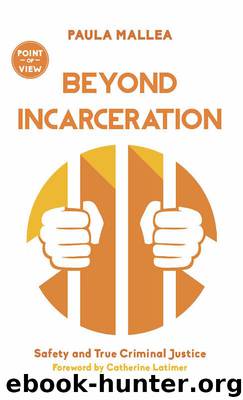Beyond Incarceration by Paula Mallea

Author:Paula Mallea
Language: eng
Format: epub
Publisher: Dundurn
Published: 2017-10-10T04:00:00+00:00
Prisoners Suffering from Mental Illness and Drug Abuse
Mental illness and drug abuse have emerged as serious concerns involving large numbers of prisoners, and the numbers are rising. The prison ombudsman has repeatedly called for more treatment facilities and more expertise in dealing with these problems, but concerns continue to grow. Mental health issues are two to three times more common in prison than outside. Almost half of incoming male prisoners have drug abuse problems (alcohol, or drugs, or both) and over one-third have concurrent disorders. Psychotropic drugs are prescribed for 30 percent of prisoners, compared to 8 percent of the Canadian population. Fifty percent more women prisoners than men receive these medications.
In 2015, after four years of recommendations by the OCI that the CSC develop a reliable system to diagnose FASD (fetal alcohol spectrum disorder), there was still no such system in place. Without a way of diagnosing the disorder, there is no way to provide treatment to those who need it.
Self-harm incidents in the federal system have tripled in the last decade. Self-harm is a coping mechanism whereby prisoners find a release from uncontrollable anxiety by cutting, head-banging, or using ligatures. These activities release endorphins into the brain and tend to calm the person. Such behaviour is not necessarily suicidal, but the CSC’s response is to isolate the prisoner (essentially, to use segregation), which can increase the risk of suicide.
The rising number of mentally ill prisoners has resulted in the CSC requiring at least five hundred acute psychiatric care beds and nearly one thousand intermediate beds. The OCI reports that to create the intermediate beds, the CSC closed two-thirds of its existing psychiatric beds.
There is considerable evidence that prisons have become the default destination for those with mental illness (as they are for those who use certain drugs). Resources for mentally ill people on the outside are stretched, and there appear to be no more dollars for health care. Not treating people who have a mental illness can result in their acting in ways that are illegal. As a result, people often fear this portion of the population — even though violent crime by the mentally ill is uncommon.
The recent exceptional example of Vincent Li shows the implications of lack of treatment and of public prejudice against those with mental illness. Li, whose recent release from custody has caused consternation among the public, killed a young man on a Greyhound bus in Manitoba in 2008. The details were horrific. An undiagnosed schizophrenic at the time, Li explained that he had heard voices telling him to save people from an alien attack. He was found to be “not criminally responsible” and sent to live in a psychiatric facility. There he was diagnosed and treated with medication. In 2017, he was adjudged to be safe to live without conditions in the community.
Although much outrage has been expressed as a result of this decision, and although the family of the victim is opposed to his release, it is hard to argue that this was not the right decision.
Download
This site does not store any files on its server. We only index and link to content provided by other sites. Please contact the content providers to delete copyright contents if any and email us, we'll remove relevant links or contents immediately.
| Anthropology | Archaeology |
| Philosophy | Politics & Government |
| Social Sciences | Sociology |
| Women's Studies |
The Secret History by Donna Tartt(18215)
The Social Justice Warrior Handbook by Lisa De Pasquale(11960)
Thirteen Reasons Why by Jay Asher(8468)
This Is How You Lose Her by Junot Diaz(6458)
Weapons of Math Destruction by Cathy O'Neil(5848)
Zero to One by Peter Thiel(5505)
Beartown by Fredrik Backman(5371)
The Myth of the Strong Leader by Archie Brown(5246)
The Fire Next Time by James Baldwin(5027)
How Democracies Die by Steven Levitsky & Daniel Ziblatt(4969)
Promise Me, Dad by Joe Biden(4914)
Stone's Rules by Roger Stone(4869)
100 Deadly Skills by Clint Emerson(4699)
A Higher Loyalty: Truth, Lies, and Leadership by James Comey(4562)
Rise and Kill First by Ronen Bergman(4551)
Secrecy World by Jake Bernstein(4404)
The David Icke Guide to the Global Conspiracy (and how to end it) by David Icke(4390)
The Farm by Tom Rob Smith(4331)
The Doomsday Machine by Daniel Ellsberg(4252)
